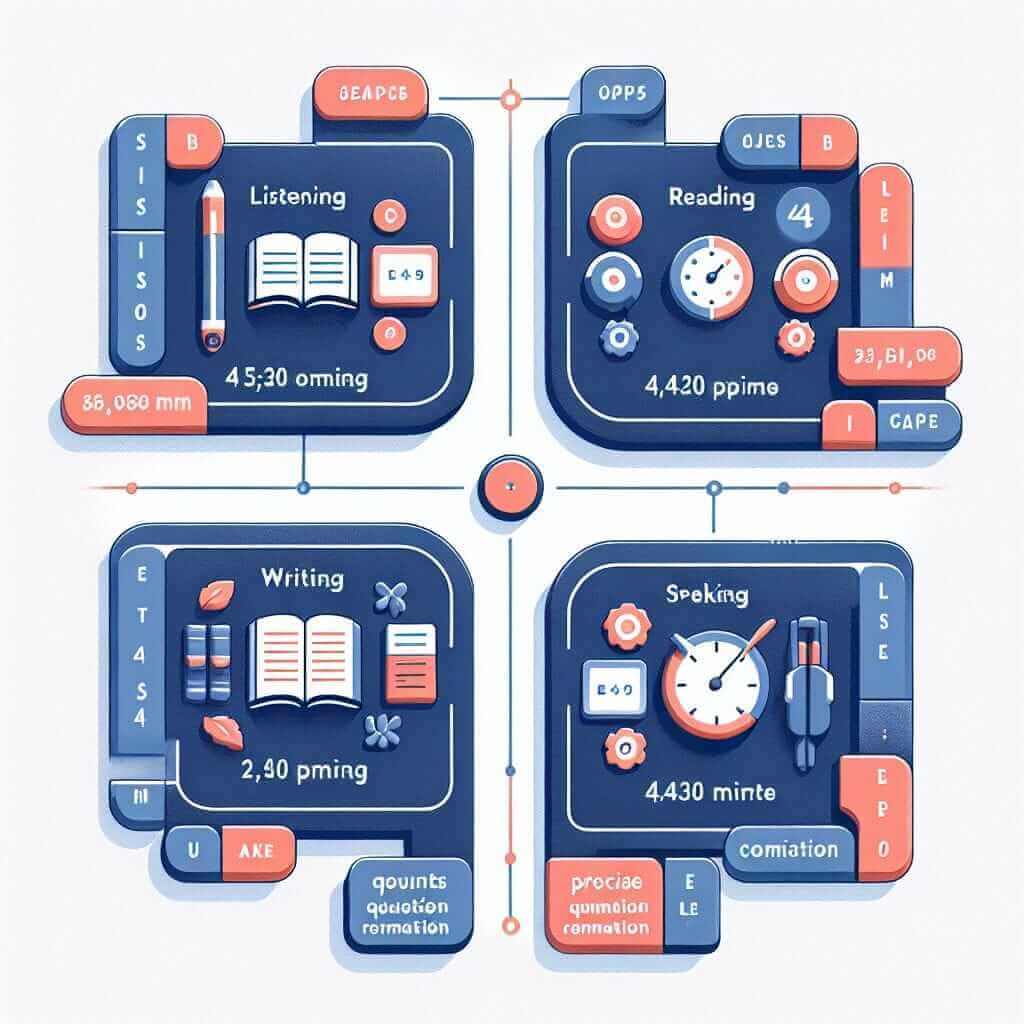Teaching students to succeed in the IELTS exam requires a deep understanding of the test format, scoring criteria, and effective teaching strategies. As an IELTS instructor with over 20 years of experience, I’ve compiled this comprehensive guide to equip educators with the knowledge and tools to effectively prepare students for this important exam.
Understanding the IELTS Exam
Before diving into teaching methodologies, it’s crucial to have a firm grasp of the IELTS exam itself.
What is IELTS?
The International English Language Testing System (IELTS) is a globally recognized English language proficiency test for non-native speakers. It assesses a candidate’s ability to listen, read, write, and speak in English for academic, professional, or immigration purposes.
IELTS Test Format
The IELTS exam consists of four modules:
- Listening: 4 sections, 40 questions (30 minutes)
- Reading: 3 sections, 40 questions (60 minutes)
- Writing: 2 tasks (60 minutes)
- Speaking: Face-to-face interview (11-14 minutes)
Each module assesses different skills and is scored individually on a band scale of 0-9. The overall band score is an average of the four modules.
Effective Teaching Strategies for IELTS
1. Focus on All Skills Equally
A well-rounded approach to IELTS preparation requires dedicating equal time and effort to all four skills. Neglecting one module can significantly impact the overall band score.
2. Incorporate Authentic Materials
Utilize authentic materials like academic articles, news reports, and recordings of native speakers to familiarize students with the language and format encountered in the IELTS exam.
3. Teach Exam Strategies and Techniques
Beyond language proficiency, understanding the nuances of the exam format and specific question types is vital. Equip your students with effective strategies for time management, note-taking, and identifying key information.
4. Practice Regularly with Mock Tests
Regularly simulate exam conditions through mock tests. This provides students with valuable experience in managing their time, handling exam pressure, and identifying areas for improvement.

Module-Specific Teaching Tips
Listening
- Focus on Different Accents: Expose students to various English accents through recordings and videos.
- Develop Note-Taking Skills: Teach effective note-taking techniques to help students capture key information.
Reading
- Skimming and Scanning: Emphasize techniques for quickly identifying main ideas and specific details.
- Vocabulary Building: Encourage consistent vocabulary acquisition through context clues and targeted exercises.
Writing
- Task Understanding: Ensure students fully understand the requirements and assessment criteria for both writing tasks.
- Structure and Cohesion: Teach clear and cohesive writing structures, including proper paragraphing and linking words.
Speaking
- Fluency and Coherence: Encourage natural and fluent speech by providing ample speaking practice.
- Lexical Resource: Broaden students’ vocabulary and encourage the use of idiomatic language.
Example from IELTS Speaking Test
Examiner: “Let’s talk about hobbies. What do you enjoy doing in your free time?”
Candidate: “In my leisure time, I am particularly fond of reading novels. It allows me to immerse myself in different worlds and expand my knowledge.”
This example demonstrates the candidate’s use of appropriate vocabulary (“leisure time,” “immerse myself”) and ability to provide a clear and relevant response.
Conclusion
Successfully preparing students for the IELTS exam requires a multifaceted approach that combines language proficiency, exam strategies, and consistent practice. By implementing the tips and strategies outlined in this guide, educators can effectively equip their students with the skills and confidence to achieve their desired IELTS band score.